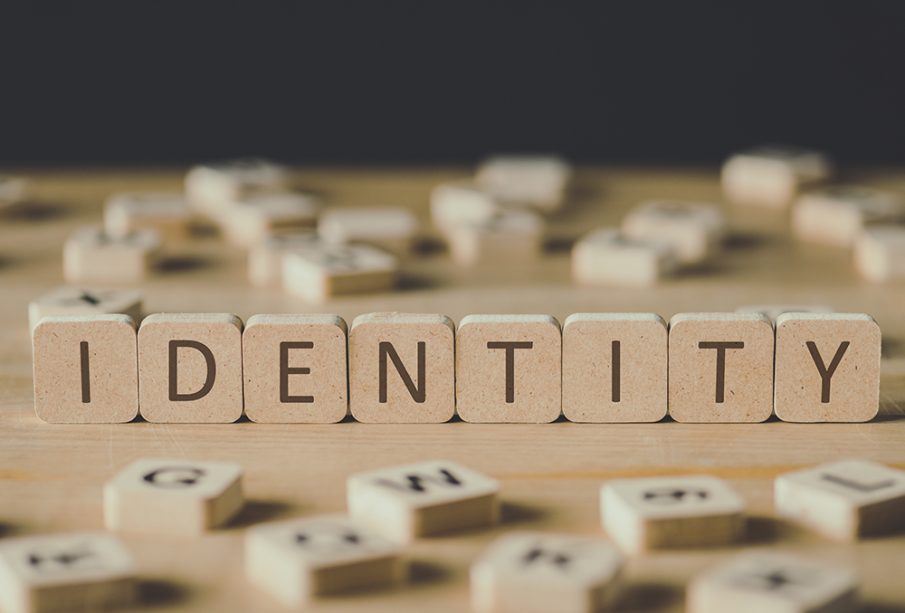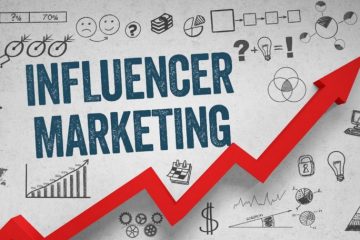A Beginner’s Guide to Brand Identity Development for Startups

For any startup, one of the most crucial steps in the journey towards success is crafting a distinctive brand identity. In a competitive market where consumers have countless choices, your brand identity sets you apart, conveying who you are, what you stand for, and why people should care. It’s not just a logo or a catchy tagline; it’s the sum total of every interaction a customer has with your business—from your website’s design to the tone of your social media posts. Whether you’re launching a tech startup or opening a new restaurant, creating a powerful brand identity is essential for building trust, loyalty, and recognition. This guide explores the core elements of brand identity development, providing a step-by-step approach for entrepreneurs eager to build a brand that resonates with their target audience.
1. Understanding Brand Identity
Before diving into the technical aspects of brand identity development, it’s important to understand what it truly means. Brand identity is the visual, emotional, and cultural representation of your company. It’s how your business communicates its mission, values, and personality to the outside world. While the terms “brand” and “brand identity” are often used interchangeably, they are distinct.
-
Brand refers to the perception that consumers have of your company—what they think of when they hear your name, encounter your products, or experience your services.
-
Brand identity, on the other hand, is the tangible representation of this perception. It’s the images, design, language, and tone that you use to shape how people perceive your brand.
Your brand identity influences how customers feel about your startup and what they expect from it. Establishing this identity early in your business’s lifecycle can lay the foundation for future marketing efforts, customer loyalty, and market positioning.
2. Define Your Brand’s Core Values and Mission
The first step in developing a solid brand identity is defining the core values and mission that will guide your brand. These elements form the foundation of your identity, shaping how your audience perceives you.
-
Core values represent the principles and beliefs that are central to your company. They are what your business stands for and should resonate with both your internal team and your target audience. For instance, if you’re starting an eco-friendly brand, your values might include sustainability, responsibility, and ethical sourcing.
-
Mission statement defines the overarching purpose of your business. It answers the question, “Why do we exist?” A clear, concise mission helps to align your team and communicate your brand’s purpose to the world.
For example, Patagonia, an outdoor apparel company, has built its brand identity around environmental responsibility. Their mission is to “build the best product, cause no unnecessary harm, and use business to inspire and implement solutions to the environmental crisis.” This mission statement not only defines the brand but also resonates deeply with their target audience, who value sustainability.
3. Know Your Target Audience
No brand identity can thrive without a deep understanding of the target audience. A brand can’t speak to everyone, and attempting to do so dilutes its impact. To build a brand identity that resonates, you must first know who you’re speaking to.
Begin by defining your ideal customer—often referred to as your buyer persona. This persona should encapsulate the demographic, psychographic, and behavioral characteristics of your target audience. Ask yourself questions like:
-
What age group does my target audience belong to?
-
What are their interests, values, and pain points?
-
What motivates them to buy products or services in my category?
-
Where do they spend most of their time online (e.g., social media platforms, websites, blogs)?
Understanding your audience allows you to craft a brand identity that speaks directly to their needs, desires, and values. Whether your brand caters to Gen Z consumers looking for trendy apparel or tech-savvy professionals seeking innovative solutions, knowing your target audience ensures that your brand identity resonates with the people who matter most.
4. Create a Visual Identity
Once your core values and audience are defined, it’s time to build the visual elements of your brand identity. These elements are the first things consumers will notice about your brand, and they play a significant role in shaping their perceptions. A strong visual identity should be memorable, cohesive, and reflective of your brand’s mission and values.
Key components of visual identity include:
-
Logo: Your logo is often the first thing people associate with your brand. It should be simple, recognizable, and versatile. A great logo is more than just an image; it encapsulates your brand’s essence in a single visual mark. Consider Nike’s iconic Swoosh or Apple’s minimalist apple symbol—both logos are instantly recognizable and embody their respective brands’ philosophies.
-
Color Palette: Colors evoke emotion and have psychological associations. Choosing the right colors for your brand is essential in conveying the mood and tone you want to project. For instance, blue is often associated with trust and professionalism (think Facebook or IBM), while green signifies health and sustainability (as seen with Whole Foods or Starbucks).
-
Typography: The fonts you use on your website, in your logo, and on your promotional materials can further communicate your brand’s personality. A playful, informal font might be suitable for a fun, creative brand, while a clean, modern typeface might work better for a professional service.
-
Imagery and Graphics: The images you use should align with your brand’s message. For example, if your brand is focused on luxury, the imagery should reflect elegance and exclusivity. Alternatively, a fun, energetic brand might use bright, dynamic images to reflect excitement and vibrancy.
5. Craft Your Brand’s Voice and Tone
Your brand’s voice is how you communicate with your audience—both in written content and through other forms of communication. It should align with your company’s mission, values, and target audience. Are you casual and friendly, or professional and authoritative? The tone you use should be consistent across all platforms, from your website to your social media posts.
For example, Innocent Drinks, a UK-based smoothie brand, uses a playful and conversational tone in their communications, reflecting their youthful and fun brand identity. On the other hand, The New York Times maintains a formal, authoritative tone that reinforces its reputation as a respected news source.
Additionally, your tone can vary depending on the context. For instance, your brand might use a more serious tone for customer support inquiries while being more casual and engaging in social media posts. Finding the right balance is key to connecting with your audience authentically.
6. Consistency Is Key
Consistency across all touchpoints is crucial for developing a strong brand identity. Whether a customer interacts with your website, social media profiles, or receives a product package, your brand should feel the same in every experience. This consistency builds recognition, trust, and loyalty over time.
To maintain consistency, create a brand style guide that outlines how your visual elements, language, and tone should be used across various platforms. A brand style guide ensures that your team, contractors, and partners understand how to represent your brand properly and consistently. This guide should include specifications for your logo, color palette, fonts, imagery, and any other visual or written content.
7. Test and Evolve Your Brand Identity
Brand identity development is not a one-time process. As your startup grows, your brand may need to evolve to keep up with changes in the market, consumer expectations, or internal shifts in business strategy. It’s important to periodically assess your brand identity and make adjustments as needed.
Some common signs that your brand identity needs updating include:
-
A shift in your target audience.
-
Changes in your business’s mission or values.
-
A desire to reposition your brand in the market.
-
Feedback from customers indicating confusion or dissatisfaction with your brand’s messaging.
Rebranding can involve subtle changes, such as updating your logo, tweaking your messaging, or adjusting your visual identity. The key is to ensure that any changes remain true to your brand’s core values while adapting to new market realities.
Conclusion
For startups, developing a strong brand identity is one of the most important steps in building a sustainable, successful business. It’s an investment that pays off by fostering customer trust, loyalty, and recognition. By defining your core values, understanding your audience, creating a compelling visual identity, and maintaining consistency across all touchpoints, you lay the foundation for long-term growth and success.
Brand identity development is an ongoing process that requires reflection, adaptation, and a deep understanding of your market. With the right approach, your startup can create a brand that not only stands out but also resonates with your audience on a meaningful level, leading to lasting relationships and business growth.
Why You Should Consider Social Media Branding You Didn’t Know
February 15, 2025The Future of Social Media Branding for Sustainable Growth
February 6, 2025Advanced Strategies for SEO Trends to Avoid
January 6, 2025
Comments are closed.
Recommended
-
Advanced Strategies for Investment Strategies That Scale
February 5, 2021 -
How Anti-Money Laundering Works: Explained
February 13, 2025 -
Advanced Strategies for SEO Trends to Avoid
January 6, 2025
Top Posts
-
How to Use Social Media to Promote Your Business Service
October 8, 2025 -
The AI Advantage: Simplifying Business Setup in UAE
September 16, 2025
Recent Posts
- How to Use Social Media to Promote Your Business Service October 8, 2025
- Case Study: How a Business Service Transformed a Company’s Growth October 8, 2025
- The AI Advantage: Simplifying Business Setup in UAE September 16, 2025
- Optimising Heat Management: Precision Cooling for Peak Performance July 31, 2025
- Why are gift cards a great option for retirement gifts? July 27, 2025
Categories
- Business (9)
- E-commerce & Online Business (5)
- Finance & Accounting (5)
- HR & Hiring (5)
- Industries (5)
- Legal & Compliance (5)
- Management & Growth (5)
- Marketing & Branding (5)
- Technology & Tools (6)
Archives
- October 2025 (2)
- September 2025 (1)
- July 2025 (2)
- May 2025 (4)
- April 2025 (5)
- March 2025 (6)
- February 2025 (12)
- January 2025 (15)
- December 2024 (1)
- November 2024 (1)
- February 2021 (1)







